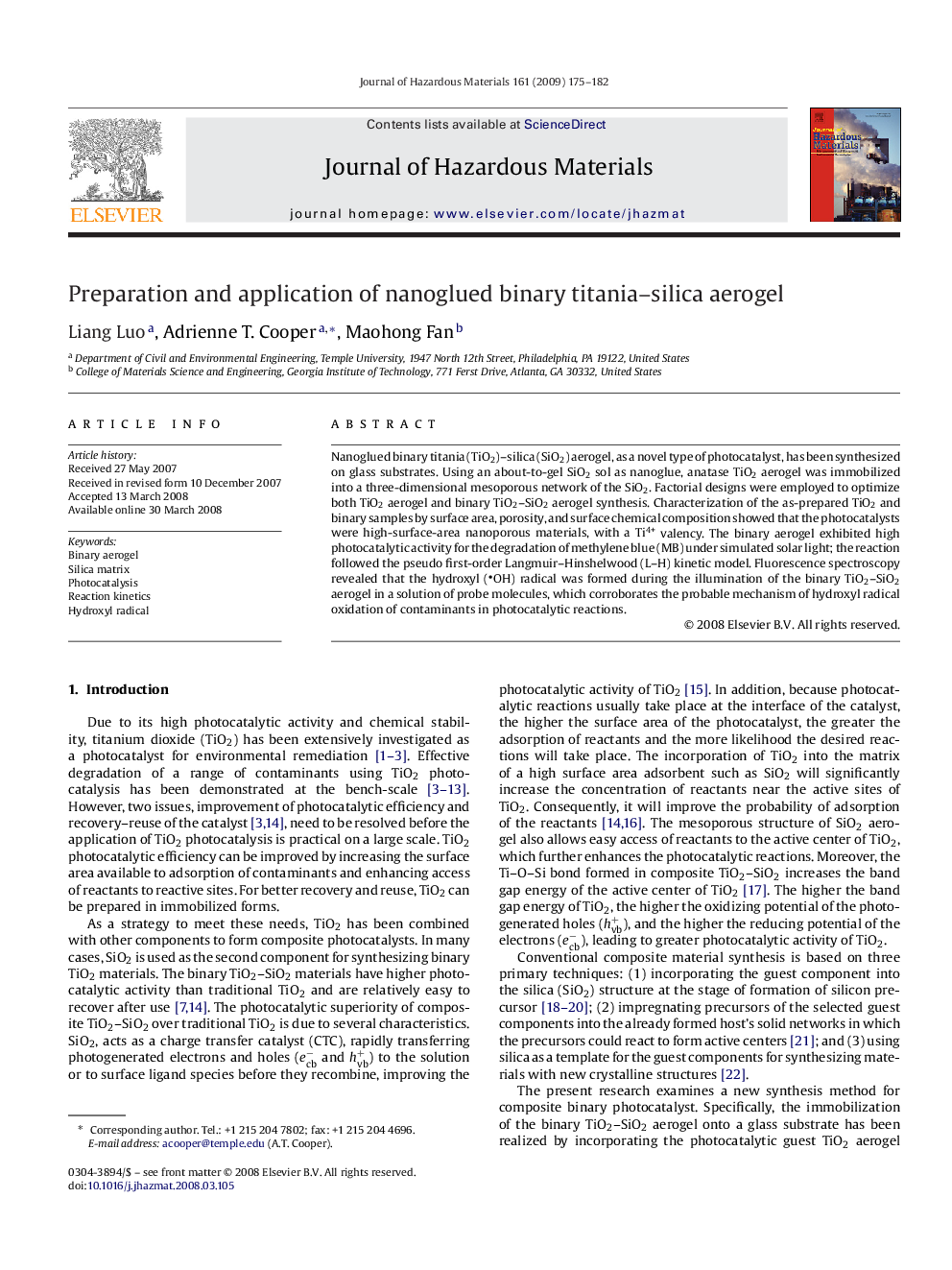| Article ID | Journal | Published Year | Pages | File Type |
|---|---|---|---|---|
| 581478 | Journal of Hazardous Materials | 2009 | 8 Pages |
Abstract
Nanoglued binary titania (TiO2)-silica (SiO2) aerogel, as a novel type of photocatalyst, has been synthesized on glass substrates. Using an about-to-gel SiO2 sol as nanoglue, anatase TiO2 aerogel was immobilized into a three-dimensional mesoporous network of the SiO2. Factorial designs were employed to optimize both TiO2 aerogel and binary TiO2-SiO2 aerogel synthesis. Characterization of the as-prepared TiO2 and binary samples by surface area, porosity, and surface chemical composition showed that the photocatalysts were high-surface-area nanoporous materials, with a Ti4+ valency. The binary aerogel exhibited high photocatalytic activity for the degradation of methylene blue (MB) under simulated solar light; the reaction followed the pseudo first-order Langmuir-Hinshelwood (L-H) kinetic model. Fluorescence spectroscopy revealed that the hydroxyl (OH) radical was formed during the illumination of the binary TiO2-SiO2 aerogel in a solution of probe molecules, which corroborates the probable mechanism of hydroxyl radical oxidation of contaminants in photocatalytic reactions.
Related Topics
Physical Sciences and Engineering
Chemical Engineering
Chemical Health and Safety
Authors
Liang Luo, Adrienne T. Cooper, Maohong Fan,
